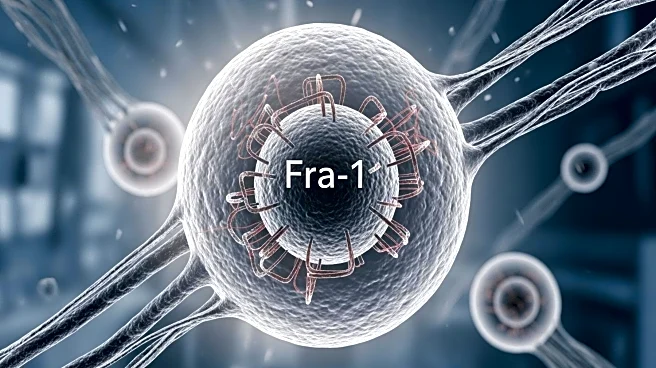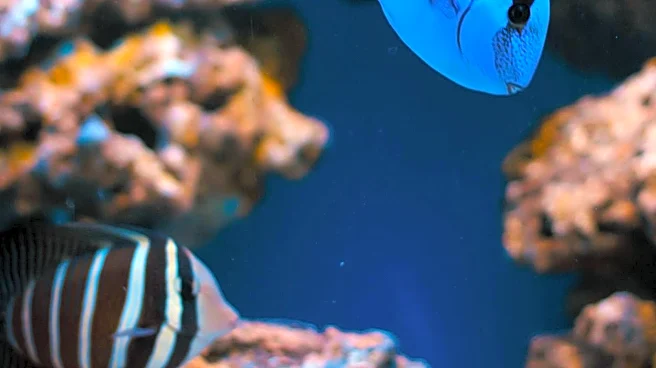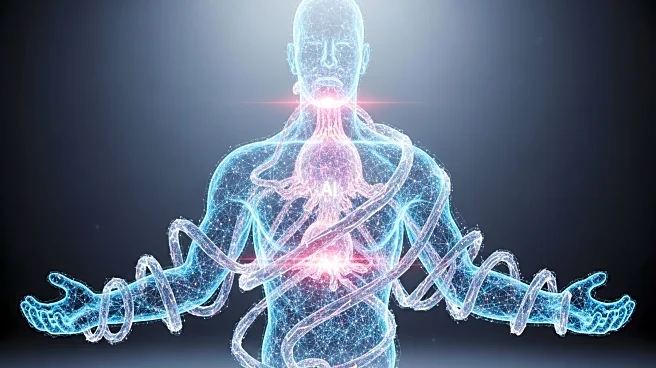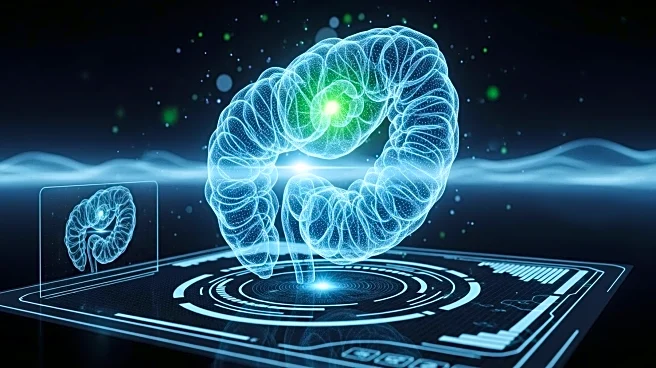What is the story about?
What's Happening?
Researchers have developed a histomorphological atlas of mesothelioma using self-supervised learning from 3446 whole-slide images. The study identified 47 histomorphological phenotype clusters (HPCs) based on features encoded by neural networks. These clusters were analyzed by pathologists to achieve consensus on morphological annotations, including inflammation and necrosis levels. The atlas enables detailed spatial annotation of mesothelioma images, predicting subtypes and patient survival outcomes. The study highlights the potential of self-supervised models in enhancing the understanding of mesothelioma's morphological diversity and its implications for diagnosis and treatment.
Why It's Important?
This research represents a significant advancement in the use of artificial intelligence for medical diagnostics, particularly in the complex field of oncology. By automating the identification of histomorphological patterns, the study offers a more objective and comprehensive approach to diagnosing mesothelioma, potentially improving accuracy and treatment outcomes. The ability to predict patient survival and subtype classification could lead to more personalized treatment plans, enhancing patient care. The findings may influence future research and development in AI-driven medical diagnostics, impacting healthcare practices and policies.
What's Next?
The study's findings could lead to the integration of AI models in clinical settings, providing pathologists with advanced tools for mesothelioma diagnosis and prognosis. Further research may explore the application of this methodology to other types of cancer, expanding its utility in oncology. The development of more refined AI models could enhance the precision of histopathological analysis, driving innovation in medical imaging and diagnostics.
Beyond the Headlines
The use of self-supervised learning in medical diagnostics raises ethical considerations regarding the reliance on AI for critical healthcare decisions. It prompts discussions on the balance between human expertise and machine learning in medical practice. The study also highlights the potential for AI to uncover previously unrecognized patterns in disease morphology, contributing to a deeper understanding of cancer biology and treatment strategies.
AI Generated Content
Do you find this article useful?













